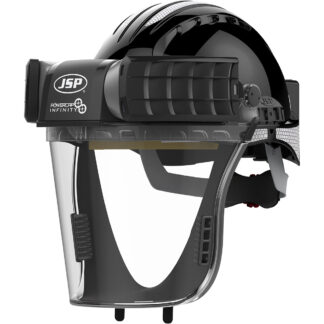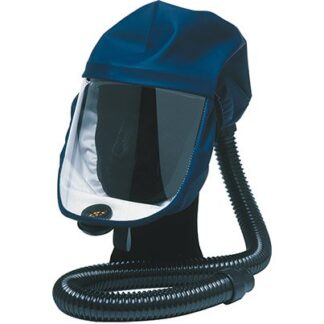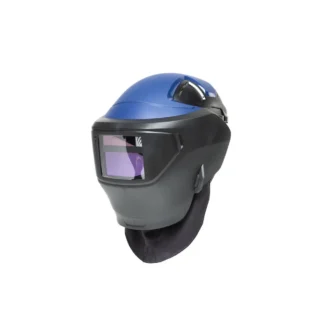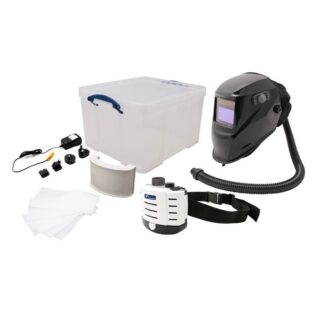Protecting the respiratory health of you and your workforce is non-negotiable in workplace safety. Whether you’re working in construction, healthcare, or an industrial environment, choosing the right respirator mask makes all the difference in safeguarding against harmful particles and substances in the workplace environment.
In this guide, we’ll discuss respirators and filtering facepiece classifications (FFP) and explore the features that make our range of masks a reliable choice for safety and comfort.
The history of respirators
Though a seemingly modern invention, forms of respirators can actually be traced all the way back through history. Pliny the Elder, a Roman author, philosopher and army commander, wrote of animal bladders being used to protect workers in Roman mines from red lead oxide dust in the first century. In the 16th century, Leonardo da Vinci built a weapon with toxic powder and suggested that soaked woven cloth be worn over the mouths of the sailors who used the weapon to protect them.
History shows that mankind has been aware for a long time that certain things shouldn’t be breathed in, but it wasn’t until the 1800s that the word ‘respirator’ was coined for masks. This was done by Julius Jeffreys, a British surgeon known as the inventor of modern respirators.
What is a respirator?
Respirators are a type of respiratory protective equipment, typically a mask, that protects the wearer from dangerous inhalation. Harmful particles and substances in the air are prevented from entering the wearer’s respiratory system and lungs via filters. These filters are either built into or attached to the respirators, and they capture the hazards in the air.
The level of filtration and protection that respirators can provide varies depending on the materials being worked with. Most masks and respirators utilise exhalation valves that allow the user to exhale with ease whilst inhaling through layers of pleated materials designed to the highest standard and utilising the latest in filtration technology. Masks that feature no valve will filter both ways, in and out. Others have working motors or full, battery-powered air filtration systems, and some have no valve or motor at all.
Each of these mask types is designed for different roles within different industries, all to perfectly suit the task at hand.
FFP (Filtering Facepiece Particulate)
Filtering Facepiece Particulate levels are classifications under the EN 149 European standard for respiratory protective devices. There are three different classifications, each suited to specific needs. These classifications are often referred to as FFP, simplified to just P1, P2 and P3.
- P1: Filters at least 80% of particles – for low-risk uses.
- P2: Filters at least 94% of particles – for medium-risk uses.
- P3: Filters at least 99% of particles – for high-risk uses, offering the highest level of protection under the European standard.
At Dust Masks Direct, we stock all protection ratings available in the UK. We have noticed a safety trend towards P2/P3 away from P1 throughout all industries over the last decade.
Proper respirator fit and maintenance
It’s essential to get a good fit when using respirators. You want your workforce to be comfortable, and even the best respirators will fail if they don’t form a proper seal around the face. A poorly fitting mask can allow harmful particles or vapours to bypass the filter and enter the wearer’s respiratory system, rendering the equipment useless.
To achieve a secure fit for reusable respirators, you’ll need to first conduct a fit test. This can only be done by a person with a Fit2Fit RPE accreditation or with a branded face fit testing kit (from Moldex, 3M, and others), to ensure a safe and comfortable fit. To learn more about the importance of fit tests, read our helpful face fit testing guide.
Once properly fitted and tested, you should check the seals on the masks. Do this before each use to ensure the mask’s seal hasn’t failed in a way that could put the wearer in danger.
Next, adjust the straps of the mask. They should be evenly tightened to maintain a comfortably tight working seal but not too tight to be uncomfortable. Face masks can take a little getting used to, but with the proper fit and adjustments, they should quickly become second nature and comfortable.
Regular maintenance is equally important for reusable respirators:
- Clean regularly by removing dirt and contaminants with mild soap and warm water. Make sure to allow the respirator to air dry completely before storing it.
- Check for signs of wear, damage or deformity before use, particularly in the filters, straps, and sealing areas of the mask.
- Filters must be changed when the breathing resistance increases or after exposure to hazardous levels of gases or particulates.
If you want to extend the life of your respirator and ensure continuous, reliable protection, then ensure you’re adding regular mask checks and maintenance to your list.
Disposable vs reusable respirators
There are a number of differences between disposable and reusable respirators, making each type better suited to specific applications and industries. Choosing the right mask model for you is essential in saving you money and time while keeping you safe.
Disposable respirators
The advantages of disposable dust masks, such as their lightweight feel and quick convenience, make them ideal for use in industries like healthcare and general dust control or whenever tasks are short-term or the exposure to dangerous particulates is limited. Masks such as the 3M 8835+ FFP3 Dust Masks are perfect for these workplace situations with their unique, off-the-face design for comfort.
The downside of disposable masks is that they’re less environmentally friendly than reusable masks, as they must be thrown away after each use. This could end up costing you if you’re using them when, instead, you should be considering reusable respirators.
Reusable respirators
The benefits of reusable masks include their durable design and flexibility. They’re made for long-term use, built to be more comfortable, and they can accommodate a wide range of filter attachments, making them ideal for a wide array of applications and hazards.
These versatile masks are best for environments with ongoing exposure to hazardous particles, vapour and gases. Take the Moldex 9000 Full Face Respirator, for example. It is able to work with a number of different filters, is secure by covering the wearer’s whole face, but comfortable enough to wear for long periods of time.
A note to consider is that reusable masks are more expensive than disposable masks. Over time, this investment becomes far more cost-effective, plus it reduces waste. If you find you’re spending too much on reusable masks too often, you may be in an industry that is better suited to disposable masks.
Do you need help choosing the right respirator?
Respiratory masks are vital tools in maintaining workplace safety and protecting your team against harmful particulates and vapours. Understanding FFP classifications, the importance of proper fit and maintenance, and respirator mask types ensures you’ll choose the right solution for your workplace environment.
Need help in making the decision? Breathe easier, and let us lend a hand. As industry experts, we have years of experience that enable us to offer genuine suggestions and solutions. If you’re unsure of what respiratory protection you need, call us on 01842 765 634 and we’ll offer our best advice to help you select the right product for you.




